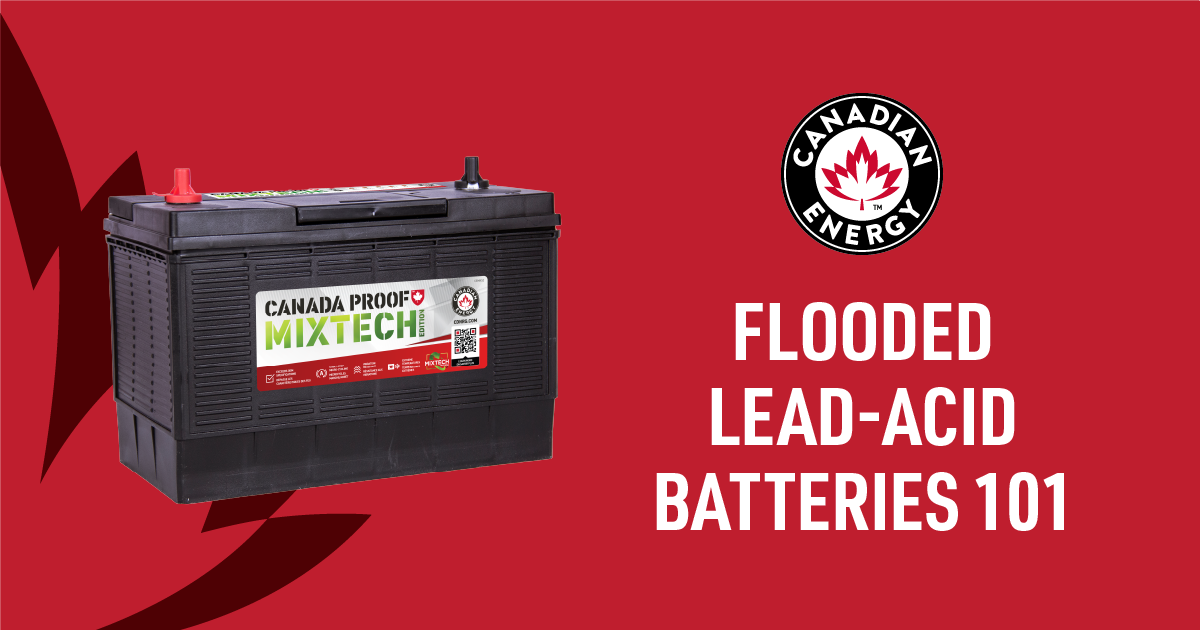Flooded Lead Acid Batteries 101

Written by: Randy Anderson, Technical Sales and Training Manager
There are many different types of batteries within this category and each are designed for a specific purpose and application to ensure the product performs and meets its expected life. In general, all flooded batteries are comprised of 1, 3, 4 or 6 individual cells with a series of positive and negative plates. Plates are submerged in electrolyte that is approximately 35% sulfuric acid water and separators prevent the negative and positive plates from coming into contact with each other and shorting out.
Each series of cells in a lead acid battery produces approximately 2.1 volts per cell, which results in battery voltage of 2, 6, 8 or 12 volts depending on the type and application. Battery plates vary in construction by manufacturer but in general a plate is a lead grid with a reinforced outer frame, within that frame is a pasted material that may contain a mixture of lead, antimony, calcium, tin and selenium depending on the manufacturer and purpose of the battery.
The battery most common to everyone is the engine starting battery; these are most commonly 12 volt but can be found in 6 volt in older equipment and 24 volt in aircraft starting applications. These batteries are of different shapes and sizes but the rule of thumb is, the bigger the battery, the more power it will deliver. The amount of power a starting battery will deliver depends on the plate surface area, for this reason the amount of cold cranking amps a battery will deliver depends on the physical size of the plate and how many plates are in each cell, to increase power output you would increase then number of plates in each cell.
A characteristic of deep cycle and traction batteries would be thicker plates and different alloys in the paste to help it adhere to the lead grid during discharge and recharge. Thicker plates increases the longevity and cycle life of these types of batteries as each time the battery is discharged and recharged a small amount of active material is shed from the plates, for this reason thicker heavier plates is a primary characteristic.
Within the deep cycle and traction group of batteries is tubular plate technology, these batteries are characterized by positive plates that are made up of multiple vertical lead spines surrounded by active paste material and all encapsulated in a micro porous non-conductive tube. Typically tubular plate batteries have significantly longer cycle life than standard flat plate batteries due to this type of plate construction. Although they a more expensive battery to build and purchase, these types of batteries almost always deliver more value over the life of the battery.
Many new vehicles today require not only the cranking power to start the engine but reserve capacity to run onboard electronics and accessories. This requirement has yielded hybrid battery technology and enhanced flooded battery (EFB). These batteries blend the characteristics of starting and deep cycle batteries into one to meet the demands of today’s newer vehicles.
Whatever the application, flooded lead acid batteries have been around since the mid 1800’s, they are still the least expensive battery technology available and I suspect will be around for many years to come.
To find a lead acid starting battery for your vehicle please visit our Lead Acid Battery page and use our “Find a Battery Search”.
If you have any questions about this blog or would like us to blog about a different subject please contact us!
